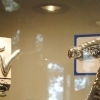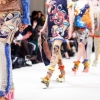What's New
-

MTV VMAJ 2018 Best Video of the Year Awardee is Yonezu
October 16, 2018
-

Get Ready for the Upcoming Tokyo Game Show 2018
September 13, 2018
-

ULTRA Worldwide Invades Japan Again
September 06, 2018
-

Show your OOTD at the Fashion’s Night Out 2018
August 24, 2018
-

Nissan Note leads again as the Best-Selling Car Model of 2018 (Q1)
June 26, 2018
The Legacy of Horseback Archery at Tsurugaoka Hachimangu
September 29, 2016 | Sheen Irerick Seeckts

It is the art of hitting three consecutive targets while aboard a running horse. Yabusame, a form of traditional Japanese archery, was the highlight of the annual festival in Tsurugaoka Hachimangu Shrine in Kamakura City last September 14 to 16.
Dressed in traditional hunting clothes, the participants, during the last day of the festival, needed to hit three wooden targets, spread along a 250-meter passage, while their horses were charging at full speed. The fragments of the shattered wooden planks were said to be blessed and were kept as charms and as fortune-telling pieces.

The arrows of Ogasawara. Photo from their official website.
The participants of this year’s competition were from Ogasawara Ryu, a school of rei-ho (etiquette), kyu-jyutsu (archery), and ba-jyutsu (horsemanship), also located in Kamakura.
Dating as far back as the 6th century, the Yabusame archery is performed by the warriors, from the Heian Period (794 – 1192) to the Kamakura Period (1192 – 1333), to ask the Shinto gods for health and good fortune. Later on, the ritual became a chivalry practice to maintain a Zen-like focus in battle.
The festival was kick-started by the purification ritual of all the priests by the sea. Afterwards, they hung seaweeds along the shrine gates as evidence of the said practice.
The opening ceremonies happened on the night of September 14 at six o’clock in the evening.

The Parade of the Shrines. Photo from http://www.asmat.eu/
The main annual rites took place at 10AM the following day, facilitated by the chief priests and shrine maidens. The Yaotome-no-mai or the Dance of the Eight Shinto Priestesses were performed by eight girls from Kanagawa. In the afternoon, the parade of the shrines were held, joined by some musicians like the taiko or traditional drum performers.
On the last day, after the thrill from the Yabusame, came a ceremonial music and dance by the Shinto priests and priestesses. The festival was later capped off by the release of hundreds of suzumushi or bell crickets. According to the official website of the shrine, this has been done to recognize the “preciousness” of life. This has also been a practice to acknowledge the passing of the seasons, marking the Autumnal Equinox in Japan.

Photo from tiffanylingho.com
Banner photo from http://traverseworld.sakura.ne.jp/
Tags: Tsurugaoka Hachimangu Shrine, Kamakura, Kanagawa, Festival, Matsuri, Traditional, Travel, Autumn, Archery, horseback, shintoSignup
- Sign Up
- Already a member? Login Now!
